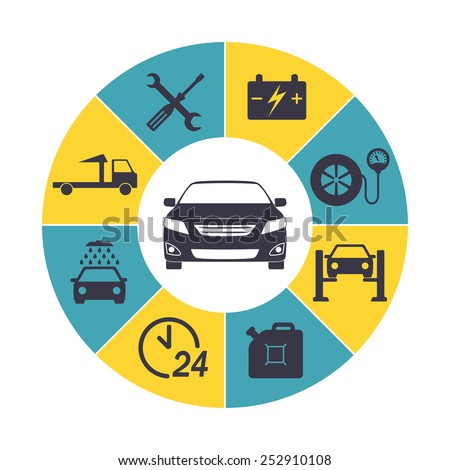Decoding Your Vehicle'S Caution Indicators: What They Genuinely Signify
Decoding Your Vehicle'S Caution Indicators: What They Genuinely Signify
Blog Article
Created By-Vinson Dalgaard
When you lag the wheel, those beautiful caution lights on your dashboard can be a bit puzzling. Do you understand what they're trying to tell you about your car's wellness? Understanding the relevance of these lights is vital for your safety and the long life of your vehicle. So, the following time one of those lights pops up, wouldn't you intend to analyze its message accurately and take the necessary steps to resolve it?
Common Caution Lighting and Interpretations
Identify usual warning lights in your cars and truck and recognize their definitions to ensure safe driving.
The most regular warning lights consist of the check engine light, which indicates concerns with the engine or exhausts system. If this light begins, it's vital to have your lorry checked without delay.
The oil stress warning light shows low oil stress, needing prompt focus to stop engine damages.
A flashing battery light could suggest a damaged billing system, possibly leaving you stranded otherwise dealt with.
The tire stress monitoring system (TPMS) light informs you to low tire pressure, affecting car security and gas effectiveness. Ignoring this could cause hazardous driving problems.
The abdominal light shows a problem with the anti-lock braking system, compromising your capability to stop promptly in emergencies.
Finally, the coolant temperature warning light warns of engine overheating, which can result in severe damage if not fixed quickly.
Comprehending these typical caution lights will help you deal with problems promptly and keep risk-free driving conditions.
Importance of Prompt Interest
Understanding the usual caution lights in your auto is only the initial step; the importance of without delay dealing with these warnings can not be emphasized sufficient to ensure your security when traveling.
When a warning light illuminates on your dashboard, it's your auto's means of interacting a prospective issue that requires focus. Neglecting car mould removal service near me can result in extra severe troubles in the future, endangering your safety and security and possibly costing you extra out of commission.
Trigger focus to cautioning lights can avoid failures and crashes. As an example, a flashing check engine light can show a misfire that, if left unattended, might create damages to the catalytic converter. Addressing this promptly can save you from a costly repair service.
Likewise, a brake system cautioning light could signify reduced brake liquid or used brake pads, essential components for your safety and security when driving.
DIY Troubleshooting Tips
If you observe a caution light on your control panel, there are a few do it yourself troubleshooting suggestions you can attempt before looking for professional assistance.
The first step is to consult your vehicle's guidebook to comprehend what the specific caution light shows. Sometimes the concern can be as simple as a loose gas cap triggering the check engine light. Tightening up https://brakepads51728.blogthisbiz.com/37649143/are-you-pondering-the-relevance-of-auto-outlining-in-relation-to-your-automobile-s-resale-value might resolve the trouble.
Another common concern is a low battery, which can cause various alerting lights. Inspecting the battery links for deterioration and guaranteeing they're safe could deal with the trouble.
If a warning light lingers, you can try resetting it by separating the automobile's battery for a couple of minutes and afterwards reconnecting it. Furthermore, examining your automobile's liquid degrees, such as oil, coolant, and brake liquid, can aid fix cautioning lights related to these systems.
Verdict
Finally, understanding your auto's warning lights is crucial for maintaining your car running efficiently and securely. By quickly resolving these signals and understanding what they mean, you can prevent expensive repairs and potential break downs.
Remember to consult your auto's handbook for particular information on each cautioning light and do something about it appropriately to make sure a trouble-free driving experience.
Keep notified, remain safe when driving!
